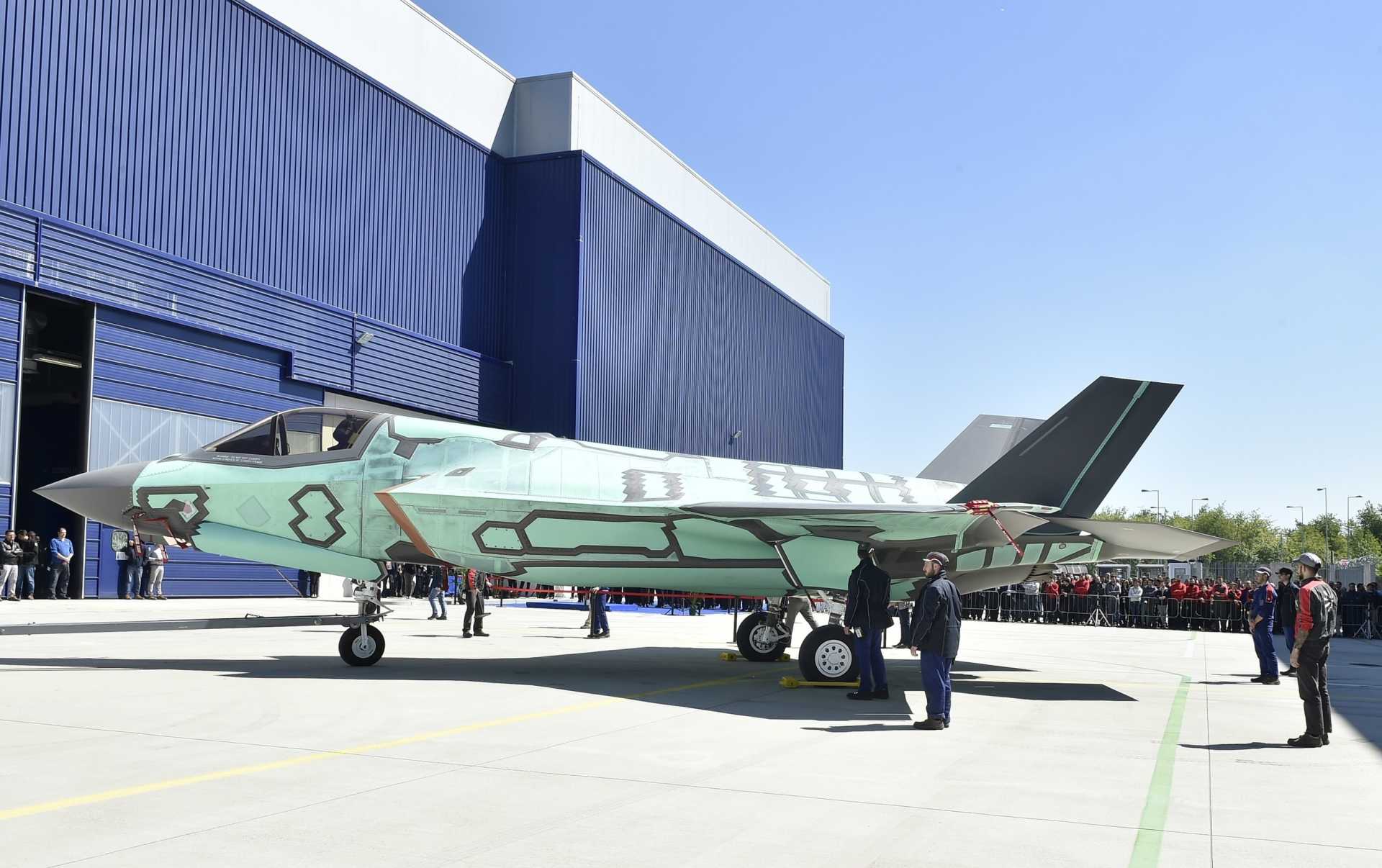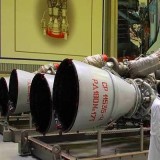Belgium asks Italy to produce its future F-35 fighter jets as alternative to US assembly line in Texas

{loadposition bannertop}
{loadposition sidebarpub}
In an interview with Het Laatste Nieuws on April 14, 2025, Belgium’s Defense Minister, Theo Francken, formally proposed that future F-35 fighter jets ordered by Belgium be assembled in Italy rather than in the United States. The minister also revealed that he had already made the request to his Italian counterpart, Guido Crosetto. Francken emphasized that this initiative could create jobs within Europe and help align Belgium’s defense investments with broader European industrial and strategic objectives, ensuring that Belgium remains a credible and dependable NATO ally, particularly given its hosting of major NATO institutions such as SHAPE and NCIA in Mons.Follow Army Recognition on Google News at this link
While specific production rates are not publicly disclosed, the Cameri FACO has demonstrated its operational capability by delivering the first Italian-assembled F-35A in 2015 and the first F-35B in 2018. (Picture source: Lockheed Martin)
Belgium’s involvement with the F-35 program began in 2018 when then-Defense Minister Steven Vandeput (N-VA) signed a contract for 34 F-35A fighter jets from U.S. manufacturer Lockheed Martin. The decision followed a multi-vendor competition in which the F-35 was selected over the Eurofighter Typhoon and Dassault Rafale. According to the Belgian government, the choice was based on price and alignment with all seven evaluation criteria. The total value of the initial contract was estimated at €3.6 billion, later revised to approximately €4 billion when factoring in aircraft, pilot training, infrastructure upgrades, and maintenance through 2030. The first deliveries were scheduled for 2023. These jets are intended to replace Belgium’s aging fleet of 54 F-16s, of which 30 are expected to be transferred to Ukraine beginning in 2026, increasing the urgency of transitioning to the F-35 platform.
The per-unit cost of the aircraft was around €76 million, reportedly lower than the amounts paid by the Netherlands or Italy. Despite initial expectations, the economic returns for Belgian companies from the F-35 procurement have not met projections. In 2018, then-Minister of Economy Kris Peeters stated that the acquisition would pay for itself through contracts awarded to the Belgian aerospace sector. However, by mid-2022, these contracts had reached only €700 million, less than 20% of the procurement cost. A revised agreement signed in 2024 estimates economic returns of €66 million per year, totaling €2.7 billion over 40 years, still far below the estimated €12.4 billion lifetime cost of the fleet. Nonetheless, the program has been described by the current government as too advanced to reverse.
As of early 2025, Belgium has received eight F-35A aircraft built at Lockheed Martin’s main production site in Fort Worth, Texas. These are currently stationed in the United States at Luke Air Force Base in Arizona for pilot and technician training. The aircraft are expected to be transferred to Belgium in autumn 2025, where they will contribute to NATO operations, including air policing on the alliance’s eastern flank. To prepare for their arrival, Belgium has initiated infrastructure upgrades at Florennes and Kleine-Brogel air bases. The upgrades are estimated at €275 million and include new hangars, four simulator rooms, maintenance facilities for six aircraft, sixteen covered aircraft stands, a Quick Reaction Alert zone, and accommodation for pilots and technicians. These works are financed through the existing multi-year military budget. Belgium also recently purchased $115 million worth of GBU-53/B bombs for its future fleet of F-35s.
Belgium’s involvement with the F-35 program began in 2018 when then-Defense Minister Steven Vandeput (N-VA) signed a contract for 34 F-35A fighter jets from U.S. manufacturer Lockheed Martin. (Picture source: Belgian Air Force)
Despite previous concerns about the cost and reliability of the aircraft, highlighted by Belgium’s temporary rejection of two F-35s in 2023 due to software and display issues, Defense Minister Theo Francken (N-VA) reaffirmed the decision to order additional F-35s in early 2025, as outlined in the current coalition agreement. He stated that Belgium’s air force lacks the scale to support a second type of fighter jet, and that future purchases will be limited to the F-35. He also noted that any future acquisition must include new offset agreements and job creation opportunities for Belgian companies, an area where the initial F-35 procurement has so far underperformed. Nevertheless, the program has continued. General Frederik Vansina, Chief of Defense Staff, recently indicated that the aircraft meets current operational needs, pointing to Israeli operations and the war in Ukraine as validation of stealth capability.
Belgium is in the process of significantly increasing its defense spending, and the newly formed government has committed to raising the defense budget by nearly €4 billion per year, aiming to meet NATO’s 2% of GDP benchmark. Under a defense expansion plan recently ratified by the government, this increase is expected to result in over €20 billion in additional defense investment over five years, including the potential purchase of rocket launchers and tanks. Francken has stated that this is only a starting point, with even higher NATO thresholds, potentially 3% or more, expected to be discussed at the upcoming NATO summit in The Hague. To finance the increase, Belgium will borrow €2 billion in 2025. According to Francken, the country’s debt-to-GDP ratio will continue to decline due to strong economic growth.
A critical factor in Belgium’s financing strategy for defense is the EU’s rule allowing member states to borrow more money for defense if the expenditures qualify as European. Francken acknowledged that it remains uncertain whether aircraft assembled in Italy would meet this requirement. If accepted as European production, the proposal could support Belgium’s broader defense financing by enabling it to secure EU-sanctioned loans without impacting its national debt targets. The Belgian government is also currently evaluating how to classify items such as secure communications, space investments, and military pensions under NATO guidelines.
As part of this initiative, Francken has formally requested that any additional F-35s ordered by Belgium be assembled at the Cameri Final Assembly and Check-Out (FACO) facility in Italy instead of at Lockheed Martin’s main plant in Fort Worth, Texas, as a recent U.S. decision also allows other European buyers to request assembly at Cameri. Therefore, Francken’s proposal would not require new infrastructure and would be consistent with the U.S. F-35 program’s distributed production model, which includes facilities in Italy and Japan, and soon an Integrated Assembly Line for center fuselages in Germany through Rheinmetall and Northrop Grumman. However, it is currently unclear whether F-35s assembled in Italy would be considered European products under EU rules, which is a necessary condition to qualify the expenditure for EU-supported borrowing mechanisms.
According to Belgian Deputy Prime Minister Kris Peeters, approximately 30% of F-35 components come from European suppliers. (Picture source: Belgian Air Force)
The suggestion to shift the F-35 final assembly to Italy is not without precedent, as the Cameri facility in northern Italy, operated by Leonardo (formerly Alenia Aermacchi) in partnership with Lockheed Martin, is the sole Final Assembly and Check-Out (FACO) facility for the F-35 outside the United States and Japan (operated by Mitsubishi Heavy Industries, the Nagoya FACO facility assembles F-35s for the Japan Air Self-Defense Force). In 2014, the U.S. Department of Defense designated Cameri as the regional hub for heavy maintenance, repair, overhaul, and upgrade (MRO&U) of the F-35 airframe for European operators. The facility is staffed by more than 750 technicians and workers and includes production of wing components manufactured at Leonardo’s Foggia and Nola plants. While specific production rates are not publicly disclosed, the Cameri FACO has demonstrated its operational capability by delivering the first Italian-assembled F-35A in 2015 and the first F-35B in 2018. Though it does not match the Fort Worth plant in terms of volume, its production costs are considered comparable, and several European nations, including the Netherlands, already receive aircraft assembled there.
The F-35 program includes contributions from multiple countries. The United Kingdom is the sole Level 1 partner and contributes software, ejection seats, and the vertical lift system for the F-35B variant. The Italian company Leonardo also produces wing components for the global F-35 fleet. Composite and metallic sections are manufactured at its facilities in Foggia and Nola, which are then delivered to Lockheed Martin for integration. Other European participants include Denmark and Norway. Components are also supplied by Canada and Australia. Germany is currently building a fuselage assembly line through Rheinmetall and Northrop Grumman to supply parts for approximately 400 aircraft. In total, European firms produce a significant share of F-35 components. According to Belgian Deputy Prime Minister Kris Peeters, approximately 30% of F-35 components come from European suppliers.
Concerns about dependence on the United States have gained visibility across Europe. In particular, Germany and Portugal have expressed hesitation about F-35 orders due to fears of overreliance on American operational systems and software. While some have speculated about the existence of a “kill switch” that could ground aircraft in the event of political conflict, Belgian officials have consistently denied this possibility. On March 10, 2025, Francken told VRT that such claims are an “urban legend” and confirmed that Belgium’s F-35As can be operated independently and in a sovereign manner, even without full U.S. support. The Ministry of Defence reiterated that the aircraft can continue operating autonomously for at least a month using internal reserves and shared parts from the international pool.

{loadposition bannertop}
{loadposition sidebarpub}
In an interview with Het Laatste Nieuws on April 14, 2025, Belgium’s Defense Minister, Theo Francken, formally proposed that future F-35 fighter jets ordered by Belgium be assembled in Italy rather than in the United States. The minister also revealed that he had already made the request to his Italian counterpart, Guido Crosetto. Francken emphasized that this initiative could create jobs within Europe and help align Belgium’s defense investments with broader European industrial and strategic objectives, ensuring that Belgium remains a credible and dependable NATO ally, particularly given its hosting of major NATO institutions such as SHAPE and NCIA in Mons.
Follow Army Recognition on Google News at this link
While specific production rates are not publicly disclosed, the Cameri FACO has demonstrated its operational capability by delivering the first Italian-assembled F-35A in 2015 and the first F-35B in 2018. (Picture source: Lockheed Martin)
Belgium’s involvement with the F-35 program began in 2018 when then-Defense Minister Steven Vandeput (N-VA) signed a contract for 34 F-35A fighter jets from U.S. manufacturer Lockheed Martin. The decision followed a multi-vendor competition in which the F-35 was selected over the Eurofighter Typhoon and Dassault Rafale. According to the Belgian government, the choice was based on price and alignment with all seven evaluation criteria. The total value of the initial contract was estimated at €3.6 billion, later revised to approximately €4 billion when factoring in aircraft, pilot training, infrastructure upgrades, and maintenance through 2030. The first deliveries were scheduled for 2023. These jets are intended to replace Belgium’s aging fleet of 54 F-16s, of which 30 are expected to be transferred to Ukraine beginning in 2026, increasing the urgency of transitioning to the F-35 platform.
The per-unit cost of the aircraft was around €76 million, reportedly lower than the amounts paid by the Netherlands or Italy. Despite initial expectations, the economic returns for Belgian companies from the F-35 procurement have not met projections. In 2018, then-Minister of Economy Kris Peeters stated that the acquisition would pay for itself through contracts awarded to the Belgian aerospace sector. However, by mid-2022, these contracts had reached only €700 million, less than 20% of the procurement cost. A revised agreement signed in 2024 estimates economic returns of €66 million per year, totaling €2.7 billion over 40 years, still far below the estimated €12.4 billion lifetime cost of the fleet. Nonetheless, the program has been described by the current government as too advanced to reverse.
As of early 2025, Belgium has received eight F-35A aircraft built at Lockheed Martin’s main production site in Fort Worth, Texas. These are currently stationed in the United States at Luke Air Force Base in Arizona for pilot and technician training. The aircraft are expected to be transferred to Belgium in autumn 2025, where they will contribute to NATO operations, including air policing on the alliance’s eastern flank. To prepare for their arrival, Belgium has initiated infrastructure upgrades at Florennes and Kleine-Brogel air bases. The upgrades are estimated at €275 million and include new hangars, four simulator rooms, maintenance facilities for six aircraft, sixteen covered aircraft stands, a Quick Reaction Alert zone, and accommodation for pilots and technicians. These works are financed through the existing multi-year military budget. Belgium also recently purchased $115 million worth of GBU-53/B bombs for its future fleet of F-35s.

Belgium’s involvement with the F-35 program began in 2018 when then-Defense Minister Steven Vandeput (N-VA) signed a contract for 34 F-35A fighter jets from U.S. manufacturer Lockheed Martin. (Picture source: Belgian Air Force)
Despite previous concerns about the cost and reliability of the aircraft, highlighted by Belgium’s temporary rejection of two F-35s in 2023 due to software and display issues, Defense Minister Theo Francken (N-VA) reaffirmed the decision to order additional F-35s in early 2025, as outlined in the current coalition agreement. He stated that Belgium’s air force lacks the scale to support a second type of fighter jet, and that future purchases will be limited to the F-35. He also noted that any future acquisition must include new offset agreements and job creation opportunities for Belgian companies, an area where the initial F-35 procurement has so far underperformed. Nevertheless, the program has continued. General Frederik Vansina, Chief of Defense Staff, recently indicated that the aircraft meets current operational needs, pointing to Israeli operations and the war in Ukraine as validation of stealth capability.
Belgium is in the process of significantly increasing its defense spending, and the newly formed government has committed to raising the defense budget by nearly €4 billion per year, aiming to meet NATO’s 2% of GDP benchmark. Under a defense expansion plan recently ratified by the government, this increase is expected to result in over €20 billion in additional defense investment over five years, including the potential purchase of rocket launchers and tanks. Francken has stated that this is only a starting point, with even higher NATO thresholds, potentially 3% or more, expected to be discussed at the upcoming NATO summit in The Hague. To finance the increase, Belgium will borrow €2 billion in 2025. According to Francken, the country’s debt-to-GDP ratio will continue to decline due to strong economic growth.
A critical factor in Belgium’s financing strategy for defense is the EU’s rule allowing member states to borrow more money for defense if the expenditures qualify as European. Francken acknowledged that it remains uncertain whether aircraft assembled in Italy would meet this requirement. If accepted as European production, the proposal could support Belgium’s broader defense financing by enabling it to secure EU-sanctioned loans without impacting its national debt targets. The Belgian government is also currently evaluating how to classify items such as secure communications, space investments, and military pensions under NATO guidelines.
As part of this initiative, Francken has formally requested that any additional F-35s ordered by Belgium be assembled at the Cameri Final Assembly and Check-Out (FACO) facility in Italy instead of at Lockheed Martin’s main plant in Fort Worth, Texas, as a recent U.S. decision also allows other European buyers to request assembly at Cameri. Therefore, Francken’s proposal would not require new infrastructure and would be consistent with the U.S. F-35 program’s distributed production model, which includes facilities in Italy and Japan, and soon an Integrated Assembly Line for center fuselages in Germany through Rheinmetall and Northrop Grumman. However, it is currently unclear whether F-35s assembled in Italy would be considered European products under EU rules, which is a necessary condition to qualify the expenditure for EU-supported borrowing mechanisms.

According to Belgian Deputy Prime Minister Kris Peeters, approximately 30% of F-35 components come from European suppliers. (Picture source: Belgian Air Force)
The suggestion to shift the F-35 final assembly to Italy is not without precedent, as the Cameri facility in northern Italy, operated by Leonardo (formerly Alenia Aermacchi) in partnership with Lockheed Martin, is the sole Final Assembly and Check-Out (FACO) facility for the F-35 outside the United States and Japan (operated by Mitsubishi Heavy Industries, the Nagoya FACO facility assembles F-35s for the Japan Air Self-Defense Force). In 2014, the U.S. Department of Defense designated Cameri as the regional hub for heavy maintenance, repair, overhaul, and upgrade (MRO&U) of the F-35 airframe for European operators. The facility is staffed by more than 750 technicians and workers and includes production of wing components manufactured at Leonardo’s Foggia and Nola plants. While specific production rates are not publicly disclosed, the Cameri FACO has demonstrated its operational capability by delivering the first Italian-assembled F-35A in 2015 and the first F-35B in 2018. Though it does not match the Fort Worth plant in terms of volume, its production costs are considered comparable, and several European nations, including the Netherlands, already receive aircraft assembled there.
The F-35 program includes contributions from multiple countries. The United Kingdom is the sole Level 1 partner and contributes software, ejection seats, and the vertical lift system for the F-35B variant. The Italian company Leonardo also produces wing components for the global F-35 fleet. Composite and metallic sections are manufactured at its facilities in Foggia and Nola, which are then delivered to Lockheed Martin for integration. Other European participants include Denmark and Norway. Components are also supplied by Canada and Australia. Germany is currently building a fuselage assembly line through Rheinmetall and Northrop Grumman to supply parts for approximately 400 aircraft. In total, European firms produce a significant share of F-35 components. According to Belgian Deputy Prime Minister Kris Peeters, approximately 30% of F-35 components come from European suppliers.
Concerns about dependence on the United States have gained visibility across Europe. In particular, Germany and Portugal have expressed hesitation about F-35 orders due to fears of overreliance on American operational systems and software. While some have speculated about the existence of a “kill switch” that could ground aircraft in the event of political conflict, Belgian officials have consistently denied this possibility. On March 10, 2025, Francken told VRT that such claims are an “urban legend” and confirmed that Belgium’s F-35As can be operated independently and in a sovereign manner, even without full U.S. support. The Ministry of Defence reiterated that the aircraft can continue operating autonomously for at least a month using internal reserves and shared parts from the international pool.




